Amid Surat’s bustling growth, Amoeba by Hiren Patel Architects breaks office norms with its organic, fluid design—seamlessly merging workspaces with nature to foster creativity and collaboration.
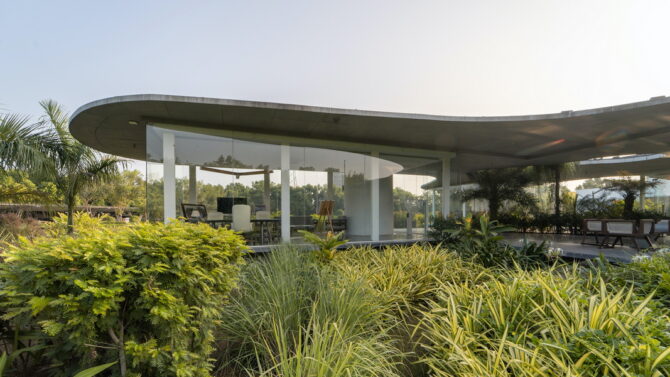
Surat, Gujarat’s vibrant commercial hub, is well-known for its booming textile and diamond industries. In the heart of this modernizing city, Amoeba, a revolutionary office space designed by Hiren Patel Architects, stands out as a perfect blend of nature and cutting-edge architecture. Spanning over 8,000 square feet, the project reimagines traditional office spaces, replacing rigid boundaries with fluid, dynamic forms that promote collaboration, creativity, and a sense of openness.
Breaking Boundaries in Office Design
Inspired by the adaptability and fluidity of the single-celled organism it is named after, Amoeba creates a work environment unlike any other. Instead of conventional, compartmentalized offices, the space is composed of four glass cubes—dedicated to two directors’ offices, a meeting room, and a staff area. These cubes are deliberately arranged around a central veranda, drawing from the cultural essence of Indian homes where verandas serve as informal gathering spots.
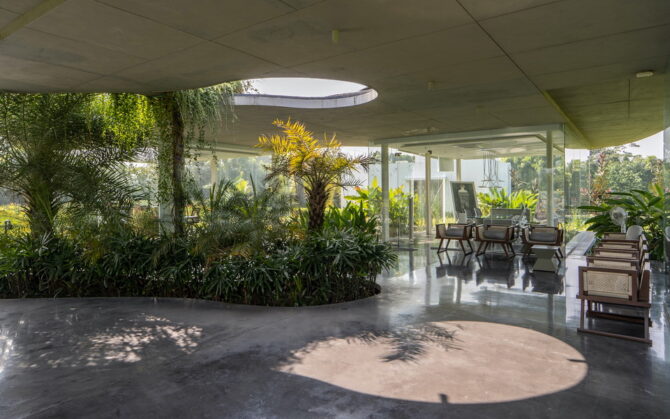
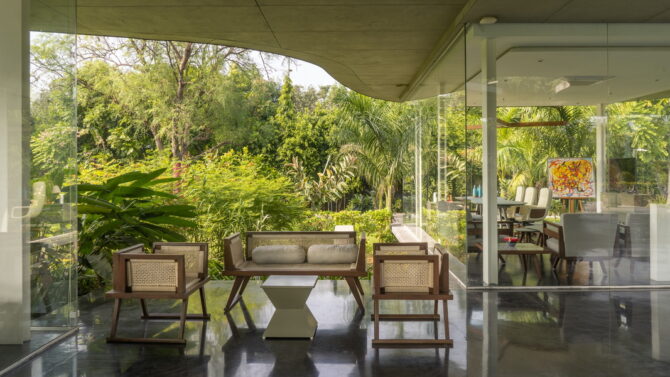
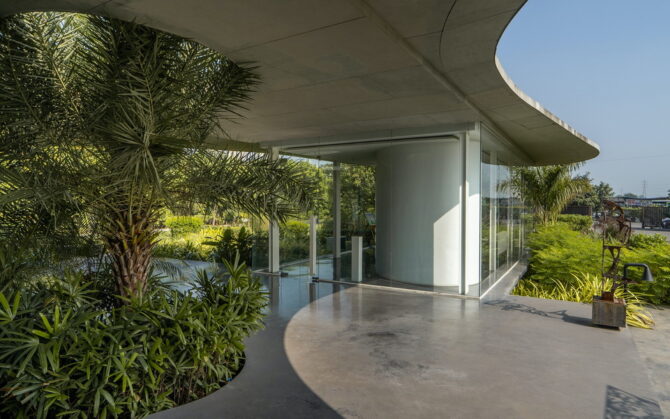
The design breaks barriers—both physical and symbolic—allowing for natural light, ventilation, and a seamless connection between indoor and outdoor spaces. Such openness fosters an atmosphere of fluid communication, innovation, and flexibility. The veranda, much like an outdoor living room, becomes the heart of the office, encouraging spontaneous conversations and collaboration.
Nature as a Design Element
Incorporating nature into workspace design isn’t new, but Amoeba takes biophilic principles to another level. The office does not impose itself on the environment; instead, it adapts to it. The extensive use of glass creates transparency, blurring the lines between interiors and exteriors. This not only reduces the need for artificial lighting but also connects employees to their surroundings, promoting well-being and productivity.
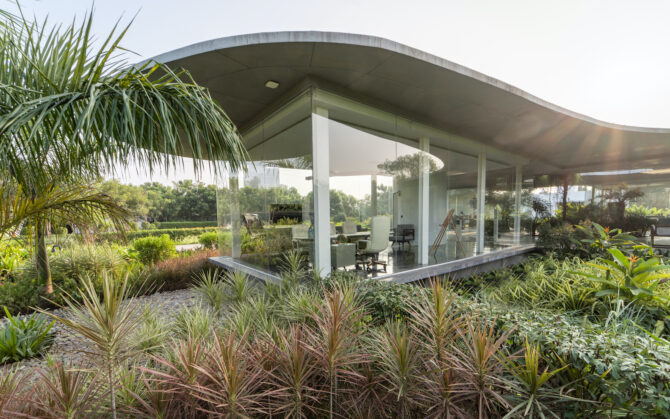
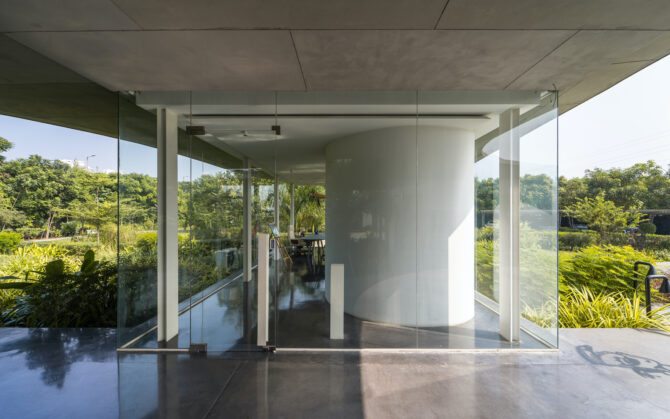
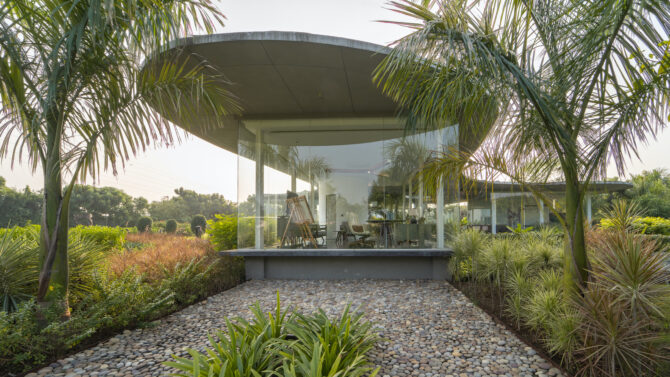
The fluid design also reflects Surat’s dual identity—a city rooted in tradition yet rapidly evolving into a modern metropolis. Amoeba embraces this duality by integrating contemporary architecture with the warmth of traditional Indian spaces.
A Space that Breathes and Adapts
The free-flowing structure of Amoeba ensures that the office is more than just a place to work; it is a living, breathing environment. The adaptable spaces allow for multiple uses—formal meetings, informal gatherings, brainstorming sessions, or even moments of solitude. In an era where flexible workspaces are the future, Amoeba sets a benchmark for design innovation.
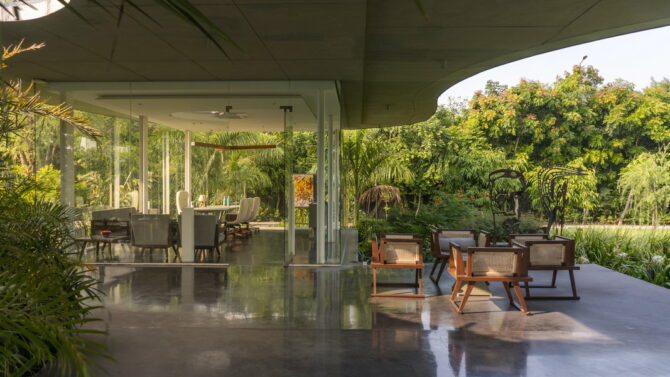
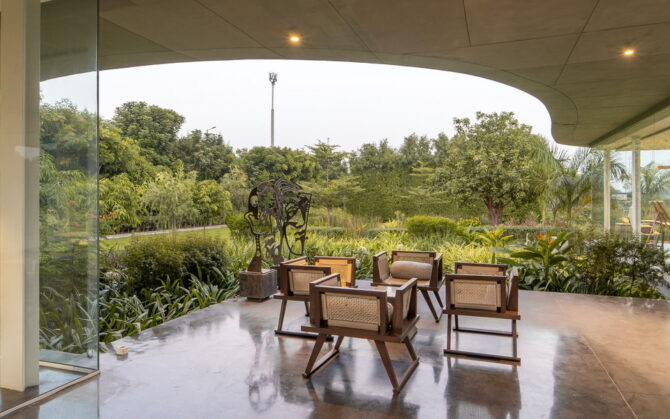
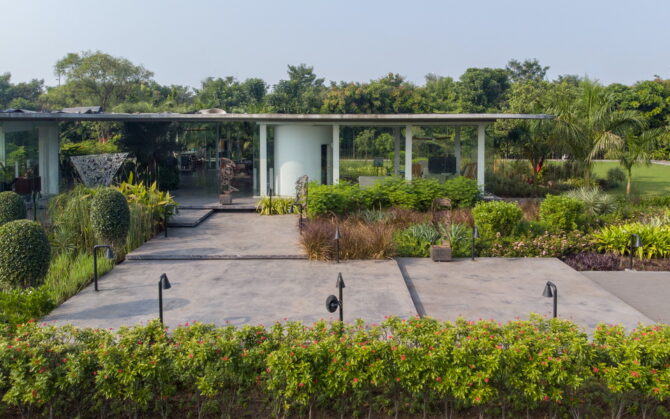
Furthermore, Amoeba’s focus on openness serves as a symbolic representation of modern work culture—one that values transparency, creativity, and human connection over hierarchy and confinement.
Impact on Future Office Designs
Amoeba challenges conventional architectural norms, serving as an inspiration for future workspace designs. As companies worldwide recognize the importance of employee well-being, creativity, and collaboration, projects like Amoeba illustrate how design can shape a company’s culture and identity.
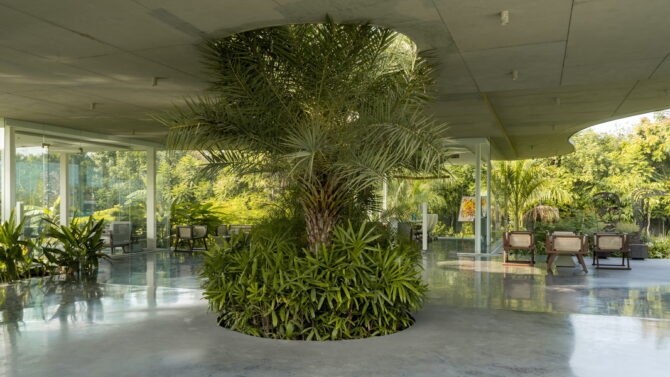
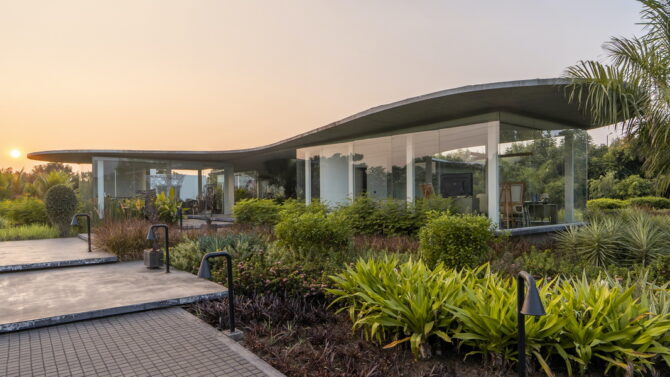
With its nature-integrated approach, Amoeba also raises a thought-provoking question for urban architects and designers: How can we create workspaces that are not only functional but also holistic, adaptable, and sustainable?
Do you believe modern office spaces like Amoeba can reshape work culture by fostering creativity and collaboration? How important is nature in your ideal workspace?
